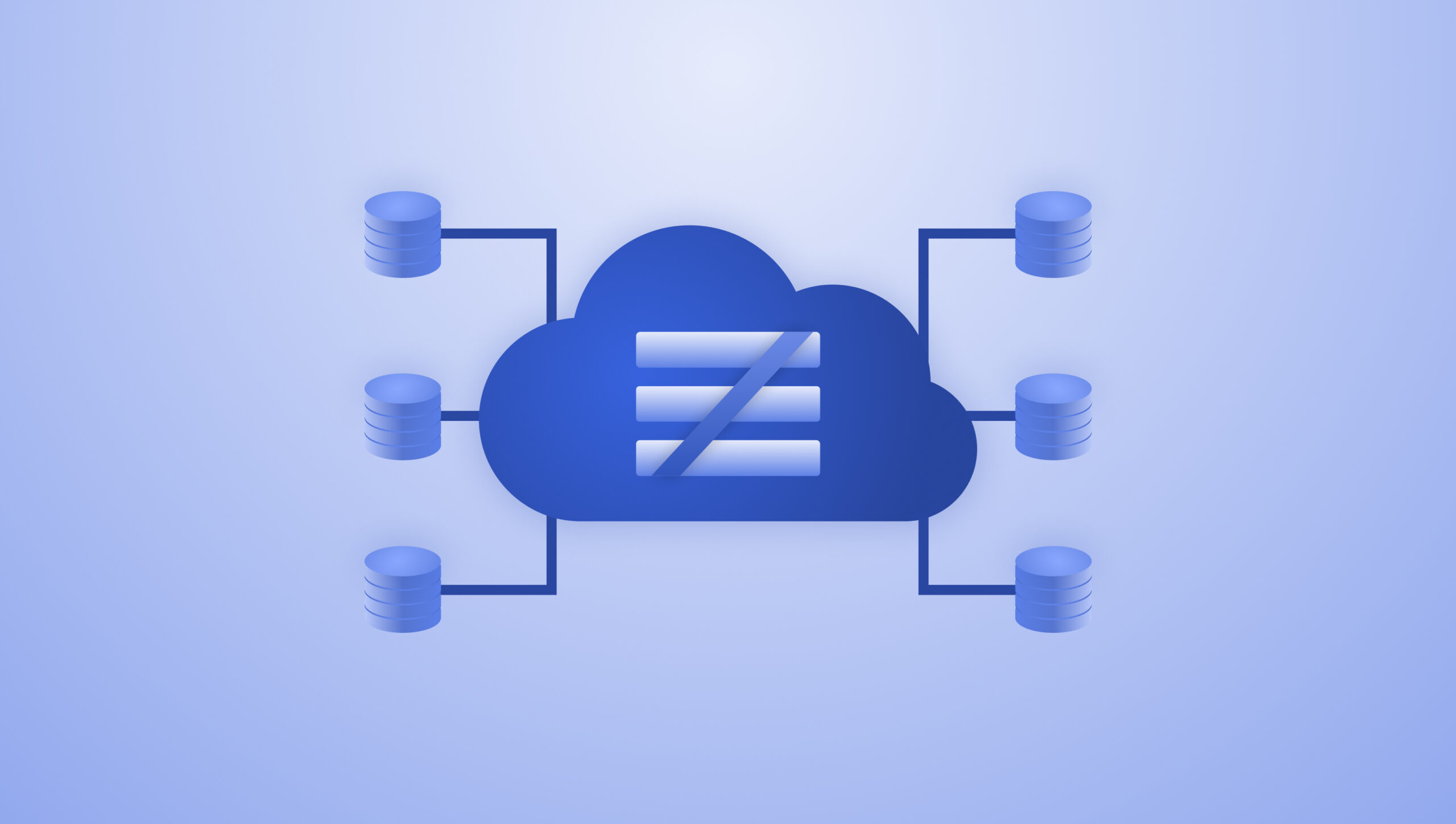Amidst the swiftly evolving and fiercely competitive lending landscape, financial institutions are constantly on the lookout for innovative solutions to streamline operations, enhance efficiency, and deliver outstanding customer experiences. One such solution gaining widespread traction is the loan origination system (
In this article, we will delve into the LOS, exploring its core functionalities, advantages, and its transformative impact on the lending sector. Furthermore, we will examine how OutSystems, a leading low-code development platform, empowers organizations to fully leverage the potential of LOS, thereby driving remarkable outcomes.
What is a loan origination system (LOS)?
A loan origination system (LOS) is a software platform designed to automate and oversee the loan origination process for financial institutions like banks, credit unions, and mortgage lenders. It acts as a centralized hub for all tasks associated with loan applications, approvals, and disbursements.
The LOS streamlines and expedites the lending process by offering a digital framework for gathering and assessing borrower information, evaluating creditworthiness, establishing loan terms, and managing documents. It replaces labor-intensive and paper-based procedures with efficient workflows and standardized protocols, enhancing operational efficiency and slashing processing time.
The seven steps of a loan origination process
The standard loan origination process for various lending institutions (such as banks, credit unions, micro-finance institutions, etc.) comprises seven distinct steps. These include qualification, documentation, application processing, underwriting, credit decision, quality check, and loan approval & disbursement. Now, let’s delve into each of these steps in depth:
#1: Borrower Pre-Qualification
As the initial stage of the loan origination process, this step entails the borrower furnishing all relevant information to the lending institution. This includes personal identification details, current address, employment status, income particulars, payment history, tax returns, expenses, desired loan amount, and purpose.
#2: Documentation
During this phase, the borrower is prompted to provide more comprehensive information and complete an application form. Additionally, they are required to submit pertinent documents related to their financial status, employment, income, and other credentials. Submissions can be made either offline or online via the lender’s web portal or mobile application.
#3: Application Processing
Following the receipt of comprehensive information, the lending institution’s credit department scrutinizes the details to ensure accuracy, authenticity, and completeness. This stage also involves engaging a credit analyst to validate the information and conduct algorithm-based analysis to evaluate the borrower’s repayment capacity.
#4: Underwriting
A crucial step in the loan origination process, underwriting evaluates the borrower’s creditworthiness and determines whether to approve or deny the loan, or the disbursable loan amount. Factors such as financial situation, credit history, debt-to-income ratio, repayment capacity, and associated risks are carefully assessed.
#5: Credit Decision
During this stage, credit analysts decide whether to approve or deny the loan request. If additional details are required, the application is returned to the originator for further information procurement. Even in cases of denial, reconsideration options may include adjustments to loan terms, tenure, or interest rates to accommodate borrower needs.
#6: Quality Check
This stage involves evaluating the accuracy and compliance of the loan application with relevant regulations and internal policies. Quality assessment is pivotal prior to final approval and disbursement of the loan.
#7: Loan Approval & Disbursement
Upon mutual agreement between the borrower and lender on the loan terms outlined in the document, the approved loan amount is disbursed. Disbursement methods may include cheque issuance, direct bank transfers to the borrower’s account, or alternative channels such as digital wallets or cards.
Typically spanning 40-60 days or longer, this entire process involves substantial paperwork and manual effort, from origination to final processing, influenced by various factors.
Why do banks need to establish a loan application processing system?
To overcome the challenges associated with manual application processing operations, banks must establish a loan origination system (LOS). Tasks such as verifying application information, determining loan terms, and preparing documentation can be both time-consuming and resource-intensive. By implementing a LOS, banks can automate these processes, saving valuable time and resources while enhancing their application processing capacity.
One of the primary advantages of a LOS is its ability to ensure accuracy and consistency in handling loan applications. Manual processing methods are susceptible to errors and inconsistencies, potentially leading to financial losses and damaging the bank’s reputation. In contrast, a LOS streamlines the application handling process, minimizing the likelihood of mistakes and ensuring a smoother and more reliable experience for both the bank and its customers.
A streamlined and efficient loan origination process not only benefits the bank but also enhances customer satisfaction. Clients experience a more seamless and streamlined application procedure, contributing to overall satisfaction with the banking experience. Additionally, a LOS facilitates better risk management practices, empowering banks to assess and mitigate risks associated with loan approvals more effectively.
What are the features of a loan origination platform?
A top-notch loan origination platform provides a variety of features aimed at streamlining the loan application and approval process, boosting efficiency, and enhancing decision-making. Below are some essential features to consider when evaluating a loan origination system:
- Automated Application Processing: The platform automates various manual tasks associated with application processing, including data entry, document verification, and application review. This reduces errors, saves time, and enhances overall process efficiency.
- Configurability and Flexibility: A robust loan origination platform offers configurability, allowing lenders to align the system with their specific business processes and requirements. It should feature customizable workflows, decision rules, and user interfaces, enabling adaptation to unique needs.
- Integrated Data and Document Management: Seamless integration with data sources and external systems allows lenders to access and analyze relevant information during the loan origination process. The platform should also include robust document management capabilities for secure storage, retrieval, and sharing of loan-related documents.
- Compliance and Risk Management: Effective compliance checks, automated credit scoring, and risk assessment capabilities help lenders adhere to regulatory requirements and manage risk efficiently. The platform should support regulatory reporting and audit trails to ensure transparency and accountability.
- Collaboration and Communication Tools: Smooth collaboration and communication among stakeholders, such as loan officers, underwriters, and customers, are facilitated through real-time updates, messaging features, and task assignment capabilities.
- Analytics and Reporting: The platform offers comprehensive dashboards and reports to provide insights into loan performance, application metrics, approval rates, and other key indicators. These analytics aid data-driven decision-making and process improvement.
- Scalability and Integration: Scalability to accommodate business growth and seamless integration with other systems, such as credit bureaus and loan servicing platforms, enhance operational efficiency and data flow.
- Mobile Accessibility: Real-time access to loan approval status via mobile devices becomes essential for optimizing the loan process, especially in auto sales. Incorporating mobile accessibility ensures all stakeholders stay informed, enabling efficient decision-making throughout the loan lifecycle.
Leverage and LOS accelerator to start accepting loan applications quickly
The global market for loan origination and management, valued at $1.9 billion in 2021, is projected to reach $3.3 billion by 2030, reflecting a compound annual growth rate (CAGR) of 14.7%. Reports indicate a growing interest among lending institutions in adopting digital loan origination systems to streamline their processes. Key requirements for these institutions include tools with capabilities for custom automated workflows, automated checks and underwriting, identity verification, secure storage of loan files and borrower details, and compliance management.
However, traditional loan origination system (LOS) processes face limitations due to legacy systems, data silos, lack of data-driven decision-making, and slow, cumbersome processes. Additionally, challenges arise from divergent compliance and regulations. Although some lenders may have digital LOS solutions in place, these often lack the agility, scalability, and adaptability required. They may function as over-the-counter software, falling short of meeting the dynamic demands of today’s competitive landscape.
To remain competitive, lenders must embrace technology that offers scalability, adaptability, and customization to accommodate unique workflows while ensuring compliance, data security, and integrity.
1: Streamlined Processing Time
To tackle prolonged processing durations, financial lending institutions can integrate cutting-edge digital tools and technologies to automate and expedite various phases of the loan origination process. This encompasses leveraging machine learning algorithms for accelerated credit assessments, embracing digital document submission and verification, and employing real-time data analysis to diminish the overall time required for loan approval and disbursement.
2: Efficient Loan Origination Workflows
Enhancing efficiency involves the adoption of centralized and well-integrated loan origination systems that furnish a comprehensive perspective of borrower and stakeholder activities. These systems can automate communication, eradicate duplicate borrower records, and facilitate seamless collaboration among stakeholders. By implementing a meticulously structured workflow management system, institutions can ensure a seamless and error-free process from pre-qualification to loan funding.
3: Adaptive Compliance and Regulatory Solutions
To navigate compliance complexities, institutions can invest in flexible digital loan origination systems that allow effortless configuration of compliance rules tailored to region-specific regulations and protocols. These systems should also offer automated compliance checks, documentation management, and customizable underwriting criteria, guaranteeing adherence to evolving regulatory mandates.
4: Comprehensive Automation Throughout the Loan Origination Process
Automation plays a pivotal role in addressing manual inefficiencies in the loan origination journey. Financial institutions can deploy end-to-end automation solutions encompassing tasks such as data entry, document processing, credit scoring, and reporting. By minimizing manual intervention, these solutions enhance operational efficiency, diminish errors, and ensure consistent compliance with regulatory checks.
5: Resource Management and Scalability
To surmount capacity limitations, lending institutions can explore options such as outsourcing certain non-core functions or investing in scalable cloud-based loan origination platforms. This enables flexible resource allocation and the ability to scale operations based on market demands. Collaborating with third-party service providers for routine maintenance and support can also liberate internal resources for strategic endeavors.
6: Enhancing Borrower Experience
Providing a seamless borrower experience entails offering user-friendly, mobile-responsive loan application interfaces. Leveraging data analytics and AI-driven personalization, lending institutions can tailor loan offerings to individual borrower requirements. Clear and transparent communication channels, including chatbots and digital support, can deliver timely assistance to borrowers, ensuring a swift, convenient, and customer-centric experience.
Loan origination system use case with OutSystems
A leading financial institution encountered challenges with their conventional loan origination process, marked by manual tasks, time inefficiencies, and error susceptibility. The reliance on a cumbersome paper-based system led to operational inefficiencies, prolonged processing durations, and subpar customer interactions. To address these issues, they turned to OutSystems, a robust low-code platform, to revamp their loan origination process.
Harnessing the powerful capabilities of OutSystems, the institution developed a tailored Loan Origination System (LOS) aligned with their specific requirements. The LOS automated various facets of the loan origination journey, encompassing application assessment, approval procedures, and document handling. Leveraging OutSystems’ intuitive visual development environment, they swiftly created user-friendly interfaces and seamlessly integrated data from diverse sources. This transition effectively eliminated the need for manual paper-based processes.
The newly implemented LOS now facilitates digital submission and processing of loan applications, significantly slashing processing timelines and enhancing operational efficacy. Real-time updates and notifications enable both customers and internal teams to monitor the progress of loan applications, fostering transparency and delivering an enhanced customer experience. Through the adoption of OutSystems’ low-code platform, the institution achieved a modernized, efficient, and secure loan origination system, establishing itself as a frontrunner in the competitive financial domain.





